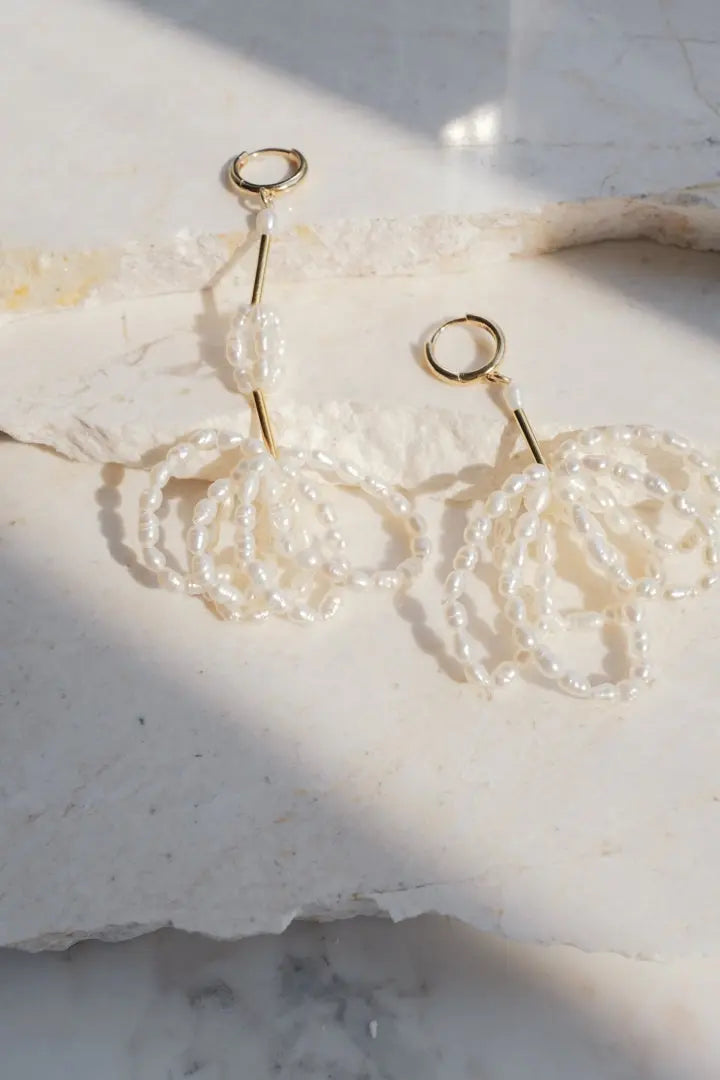How to clean your jewelry
Complete guide to jewelry maintenance and cleaning
Like all other pieces in your wardrobe, jewelry needs proper and consistent care so that it retains its beauty and character for longer. Humidity, cosmetics and direct exposure to sunlight can affect its appearance. In some cases, the PH of the skin can also have a noticeable effect on the jewelry.
If you wear your jewelry a lot, you should know that it will get micro-scratches over time, and those with veneers will clean faster. We recommend that you bring them in periodically for refreshment and take them off at least during the night.
If, on the contrary, you only keep them for special occasions, you need to store them correctly in the long term so that they do not react with the environment and retain their color and shine.
Lisa&Co. jewelry is made only from silver (925) or gold (585 or 750), using the highest quality plating and stones.
Below are our recommendations for use and maintenance, to avoid the most common problems that may arise along the way. We encourage you to contact us if your jewelry needs cleaning and refreshing.
1. How to clean your jewelry properly? Tips for each type of metal
Cleaning jewelry should be done carefully, depending on the material it is made of.
1.1. Cleaning jewelry without plating
- The most gentle cleaning method is washing with water and a mild soap. In case of more stubborn deposits, the jewelry can be left to soak for 5-10 minutes.
- Solid gold or silver jewelry can be cleaned with dry wipes impregnated with abrasive particles - this fades and evens out signs of wear and cleans any other residue from their surface.
- For each type of metal there are special chemical solutions that dissolve oxide or traces of cosmetics from the surface of the jewelry. Such cleaning should be done only occasionally, because frequent exposure to chemicals can have the opposite effect - damage. The jewelry is completely immersed in 5-second intervals, then rinsed thoroughly with cold water. Caution! Pearls are negatively affected by these solutions - either avoid them during immersion, or apply the solution only to the metal, with a cotton swab, where this is not possible.
- Once every few years, you can call on a jeweler for their mechanical polishing.
1.2. Cleaning jewelry with plywood
- Rhodium plating provides a stronger shine and prevents the metal underneath from oxidizing. For this reason, these pieces of jewelry are more durable and can be cleaned with a soft cloth or washed with mild soap and water.
- Yellow gold plated jewelry is the most sensitive and should be cleaned with care. It is recommended to clean it more often, but as little and delicately as possible. Use a soft cloth (such as those used for glasses), wipe the surface once, to collect any traces transferred from the skin and store in a place protected from air and changes in humidity/temperature.
1.3. Cleaning jewelry with precious stones and pearls
- Natural pearls should be protected from water and chemicals, but can be cleaned occasionally, with the same care given to yellow gold plating.
2. Proper storage of jewelry
To prevent oxidation and scratching, follow these essential tips:
- Store jewelry in special boxes with anti-oxidation lining or glass cases.
- If you can't wear them for long periods of time, wipe the jewelry with a soft cloth and store it in zip-lock bags, removing the air before closing.
- Avoid prolonged exposure to the sun, especially for pearls, and do not store them in sunny places or in the bathroom, as humidity accelerates the oxidation process, which makes them look old.
- Store jewelry separately. To prevent scratches, each piece should be kept in its own pouch or wrapped in a soft material. Chains should always be closed when not around the neck - every tangle and untangling brings new micro-scratches to their surface.
- Don't hang necklaces, especially those made of larger pearls. Over time, the bead will deform and the necklace may stretch.
3. Essential rules for jewelry maintenance
- Remove jewelry before swimming or exercising – exposure to water, sweat, and cosmetics can affect the metals and finish of jewelry.
- Do not wear jewelry in the pool – the chlorine in the water can stain metals and damage their surface, causing discoloration and accelerated oxidation.
- Avoid deformation – do not wear your jewelry during intense physical activities. Stone rings can be affected by shocks and the settings can loosen, risking the loss of precious stones
- Don't leave them in your bag or pocket – to prevent scratching and warping, store your jewelry in a safe place, away from moisture or excessive light.
4. How often should you clean your jewelry?
To maintain their shine, follow these recommendations:
- Wipe your jewelry after each wear – a soft cloth removes sweat and cosmetic residue.
- Clean them occasionally with a gentle solution – once every few months, wash your gold or silver jewelry with soap and water to prevent dirt from building up.
- Call a jeweler for a professional cleaning – a professional polish, ultrasonic bath or mechanical grinding can restore the jewelry to its original appearance
5. Why is jewelry care important?
Proper care of jewelry extends its lifespan and preserves its beauty:
- Prevents oxidation and loss of shine
- Protects mountings and prevents loss of gemstones
- Reduces the risk of metal deformation and damage
If you follow these simple tips, your jewelry will look flawless for years to come!


